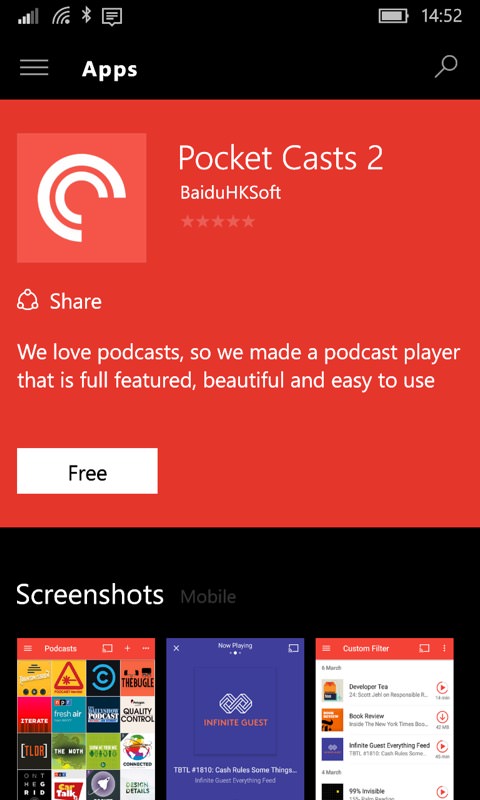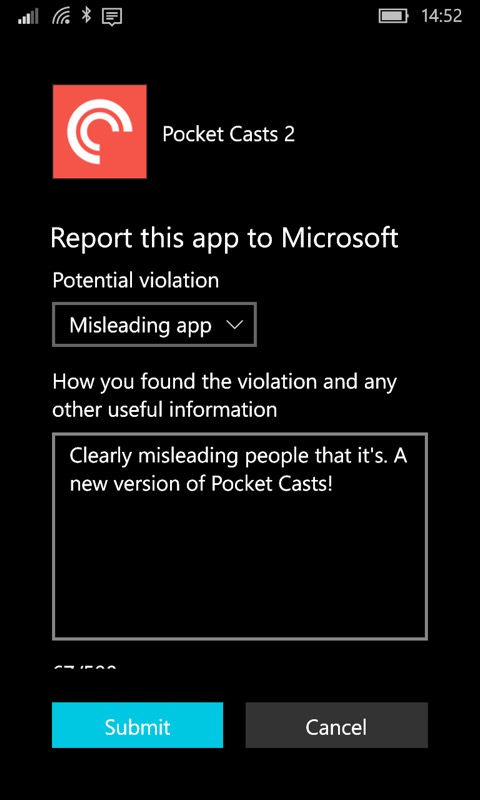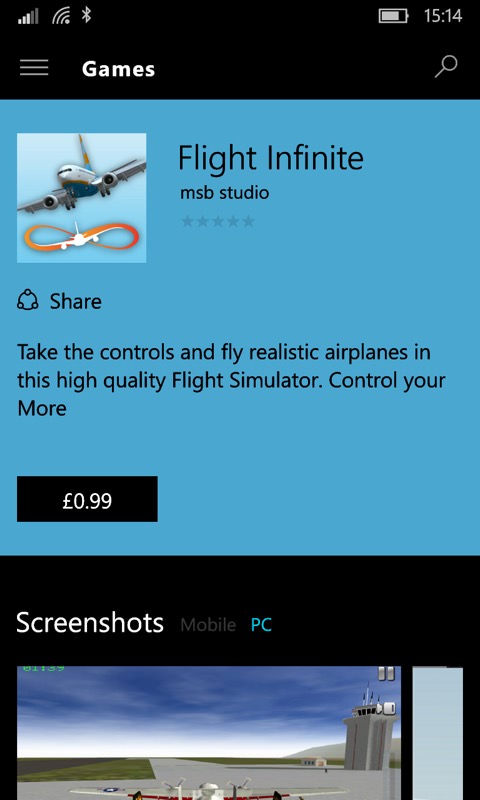Published by Steve Litchfield at 7:48 UTC, October 20th 2015
I’ve complained so many times about duplicate and misleading applications in the Windows Phone/Windows 10 Mobile Store, and it’s not clear how much Microsoft has listened – certainly plenty seems to keep slipping through the net. But I wanted to model how you and I can help, by using a function I’d never actually used before. It only takes a few seconds and who knows, if a few thousand (or more?) of us report the odd miscreant when we come across them, the Store may get better faster and we’ll all benefit in the long term?
Of course, you could argue – and I have – that sorting out misleading applications in an application store is not the job of end users. It’s the job of QA people at the Store not to approve them in the first place. And, hopefully, this end of things will keep on improving. But you and I can help out, at least.
So you’re browsing the Windows Phone/Windows 10 Mobile Store or searching for something. And you come across an item – an app or game – which doesn’t look right. Either (or all):
- The title’s mangled deliberately (see below for some examples)
- The description text has awkward typos, as if they’ve been typed in by some non-English-speaking pirate in the Far East
- The developer name doesn’t match what you remember the publisher/dev to be
- The app/game has no ratings or reviews, potentially very odd if it’s supposed to be a major item that you were looking for
All of these should ring alarm bells in your head. At this point, most people (and this inlcuds me) just think ‘No thanks’ and move to the next search match and bingo, there’s the real deal. But isn’t it worth us each taking around 15 seconds when this happens to warn others? Or, at least, to warn Microsoft about the dodgy application/game? I strongly suspect that more attention is paid to ‘reported problems’ than to vague, misleading submissions in the first place. After all, in this security-obsessed world (and rightly so), an item could be being reported because it contains a serious risk, so you’d hope that Microsoft would jump on ‘reports’ very quickly indeed.
Anyway, here’s how to get involved, with three real world examples, all picked up inside a couple of minutes Store browsing:


Pocket Casts 2, eh? We all love Pocket Casts, the podcasting app, so how about the sequel, version 2? Except that there isn’t a version ‘2’ and the developer name isn’t the usual ‘Shift Jelly’. This is a clear fake, ripping off the description and screenshots. Who knows what it does, but I wasn’t going to risk it. Right at the bottom of the app listing is a link ‘Report this app to Microsoft’. I tapped this and then filled in a few words to explain the problem. Hit ‘Submit’ and we’re done.


Uh-oh, another one. “Real Speed Car Ultimate Need” !! Again, who knows what it does, but I want no part of it. Probably just serves the poor use unending ads and malware-stocked web pages. Note the description includes repeated text and typos – certainly not what you’d expect from a top game publisher, never mind the garbled title. Again, reported to Microsoft.


I love Infinite Flight, the game – but what’s this? Flight Infinite, and with ripped off description and screenshots? And asking for 99p, unlike the freemium original. It’s a blatant attempt by some pirate to make a few dollars and duly reported.
I do wonder how many ‘reports’ it takes of a particular item before Microsoft takes notice? I’m guessing not that many, based on my previous hunch about them not wanting to miss something that was truly malicious rather than simply grossly misleading.
What about you? Data points welcome – how often do you report applications and games in the Store? Did it make any difference? And will you perhaps resolve, like me, to be a little more proactive in stomping on things as and when you do come across them? Right now, the ecosystem needs all the help it can get, so take 15 seconds here and there to perhaps do your part?